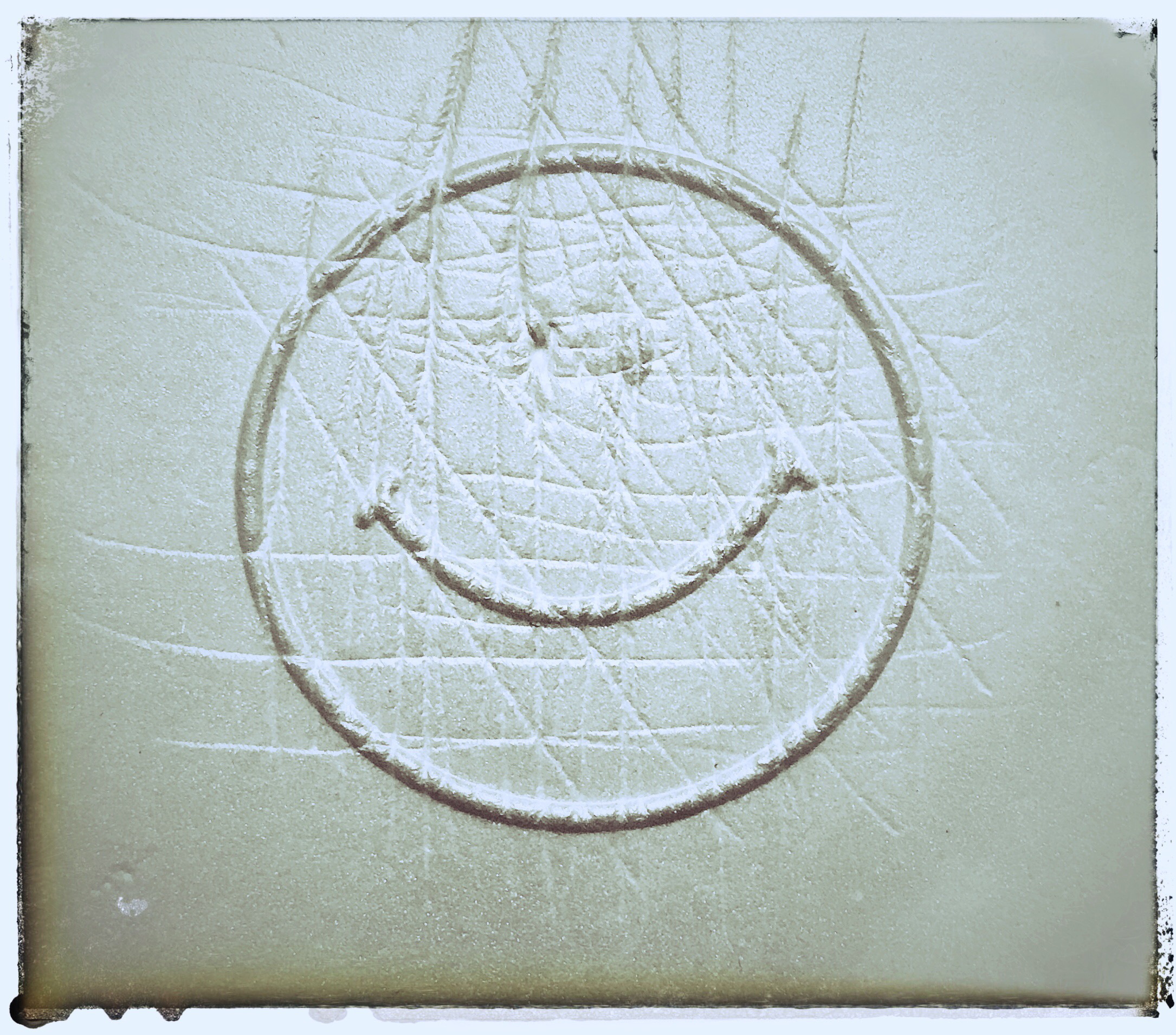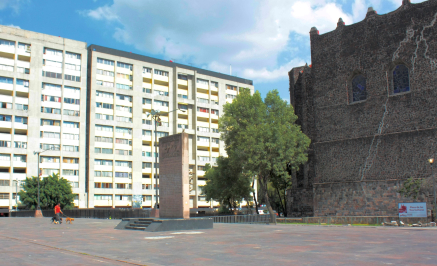This post appeared on Austen Authors in October 2015. However, I thought it worthy of a second look, especially for those of you who devour everything to do with the Regency Era.
Mention White’s, Boodle’s or Brooks’s in a story and my ears perk up. At once I picture staid facades hiding smoke-filled rooms and intrigue amid expensive carpets, wallpapers, and leather and mahogany furniture. When I read of Mr. Darcy being offered a cigar or glass of brandy, or having supper whilst talking business with his contemporaries, it is equivalent to reading about 007 holding forth in a casino. Yes, my Mr. Darcy is right up there with Ian Fleming’s hero, and it is no great leap to imagine Darcy dressed to the nines and turning heads—men’s as well as women’s. After all, Beau Brummel’s fashionable clothes influenced his contemporaries, so they must have been paying attention.

How did men about town spend their time before these three became the clubs of choice in London? I suppose we shall never know the answer to that question, but I would like to share some of what I learned about the haunts of the elite (at least the men) in the Regency era.
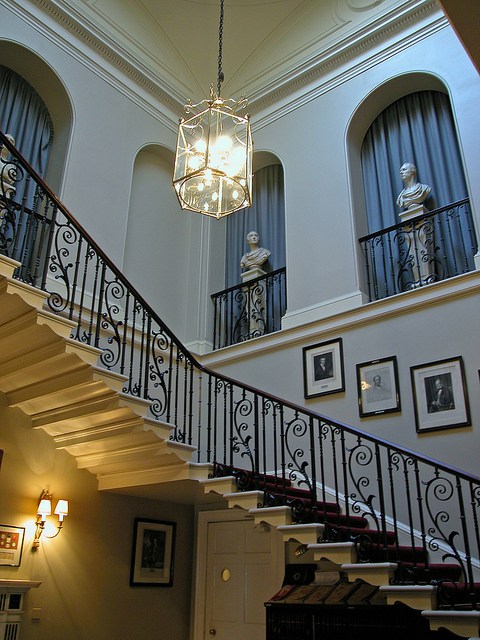
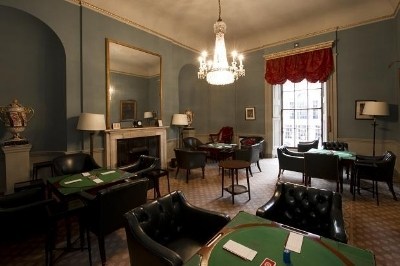
Gentlemen’s clubs were for amusement, politics, and play, and not the matter-of-fact meeting places of general society. These interior pictures are of Brooks. I have included them because this is how I imagine a proper gentlemen’s club should look. Keep in mind that there were many other less notable clubs during the Regency and much more information available than I could share here.
~~~~~~~~*~~~~~~~~

Boodle’s is a London gentlemen’s club, founded in 1762, at 49–51 Pall Mall, by Lord Shelburne, 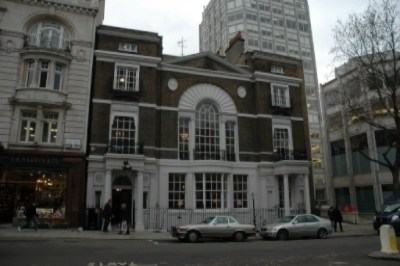 the future Marquess of Lansdowne and Prime Minister of the United Kingdom. The club came to be known after the head waiter, Edward Boodle. (One has to wonder how that came about.) I have never written Mr. Darcy as a member of this club, for I could not picture him telling his staff that he was “off to Boodles.”
the future Marquess of Lansdowne and Prime Minister of the United Kingdom. The club came to be known after the head waiter, Edward Boodle. (One has to wonder how that came about.) I have never written Mr. Darcy as a member of this club, for I could not picture him telling his staff that he was “off to Boodles.”
During the Regency era, it was known as the club of the English gentry, while White’s became the club of the more senior members of the nobility. It has never been identified with politics and it was reputed that Beau Brummell’s last bet took place at the club before he fled the country to France.
~~~~~~~~*~~~~~~~~

Brooks’s pre-eminently the clubhouse of the Whig aristocracy, occupies 60 St. James Street.  William Brooks, a wine merchant and money lender who acted as manager for Almack’s, had the clubhouse constructed. Paid for at Brooks’s own expense, the building was completed in October 1778, and all members of Almack’s were invited to join (well, all the men). Brooks’s gamble paid off, as the existing members swiftly moved into the new building and the club then took Brooks’s name.
William Brooks, a wine merchant and money lender who acted as manager for Almack’s, had the clubhouse constructed. Paid for at Brooks’s own expense, the building was completed in October 1778, and all members of Almack’s were invited to join (well, all the men). Brooks’s gamble paid off, as the existing members swiftly moved into the new building and the club then took Brooks’s name.
Brooks’s main attraction was its gaming rooms and gambling all day and all night was not unheard of. I have always been intrigued by the betting books which are often mentioned in Regency stories and one extraordinary entry from 1785 is as follows:
“Ld. Cholmondeley has given two guineas to Ld. Derby, to receive 500 Gs whenever his lordship (Use your imagination here. I had no idea they used that word back then!) a woman in a balloon one thousand yards from the Earth.” There is no indication that the bet was ever paid and I have to wonder how they would have checked the validity of the bet had it been claimed!
~~~~~~~~*~~~~~~~~
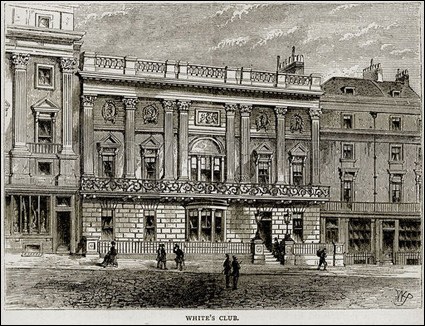
White’s, the great Tory club, located at 37 St James’s Street, London, is the oldest and most exclusive gentleman’s club in the city. It began in 1693 as a chocolate shop established in Mayfair, by an Italian immigrant named Francesco Bianco.
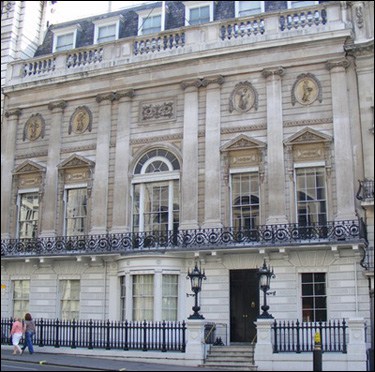 The hot chocolate emporium went under the name Mrs. White’s Chocolate House and from it tickets were sold to the productions at King’s Theatre and Royal Drury Lane Theatre as a side-business. By the early 18th century, however, it had transitioned from chocolate shop to an exclusive gambling house where fortunes were won and lost.
The hot chocolate emporium went under the name Mrs. White’s Chocolate House and from it tickets were sold to the productions at King’s Theatre and Royal Drury Lane Theatre as a side-business. By the early 18th century, however, it had transitioned from chocolate shop to an exclusive gambling house where fortunes were won and lost.
Those frequenting it were known as “the gamesters of White’s” and Jonathan Swift once referred to the club as the “bane of half the English nobility.” Moreover, White’s is famous for having a bow window on the ground floor where Beau Brummell ruled until he left for the Continent in 1816.
About 1870 the club was offered for auction and changed hands. Afterward, it is stated, “there was a great falling off in the number of members proposed for election; and after being so many years the great resort of the dandies, it is rapidly becoming the stronghold of what may be called fogeydom.”
Fogeydom? What a sad picture of the White’s I love to write about in my tales.
~~~~~~~~*~~~~~~~~
In conclusion, I leave you with this picture of St. James’s Street showing Brooks’s on the right and Boodle’s on the left, and a quote from that era: “From the beginning there were too many aristocratic clubs and private mansions in St. James’s Street to leave much room for plebeian inns and hostelries on either side of so highly respectable a thoroughfare.”
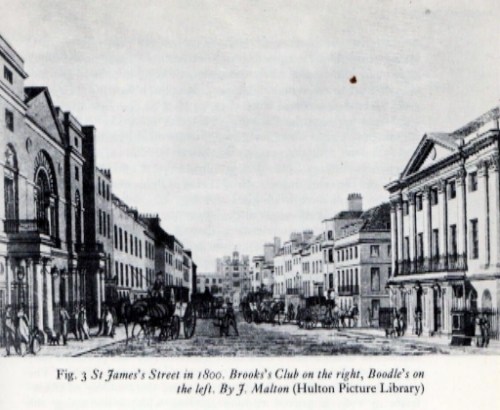
I hope you enjoyed seeing actual pictures of the three most popular gentlemen’s clubs in the Regency era (then and now) and learning a bit about them. Do you have a favorite?
Information for this post came from the following sites:
http://www.british-history.ac.uk/old-new-london/vol4/pp140-164, https://en.wikipedia.org/wiki/White, https://en.wikipedia.org/wiki/Boodle, https://en.wikipedia.org/wiki
Advertisements Share this:- Share
